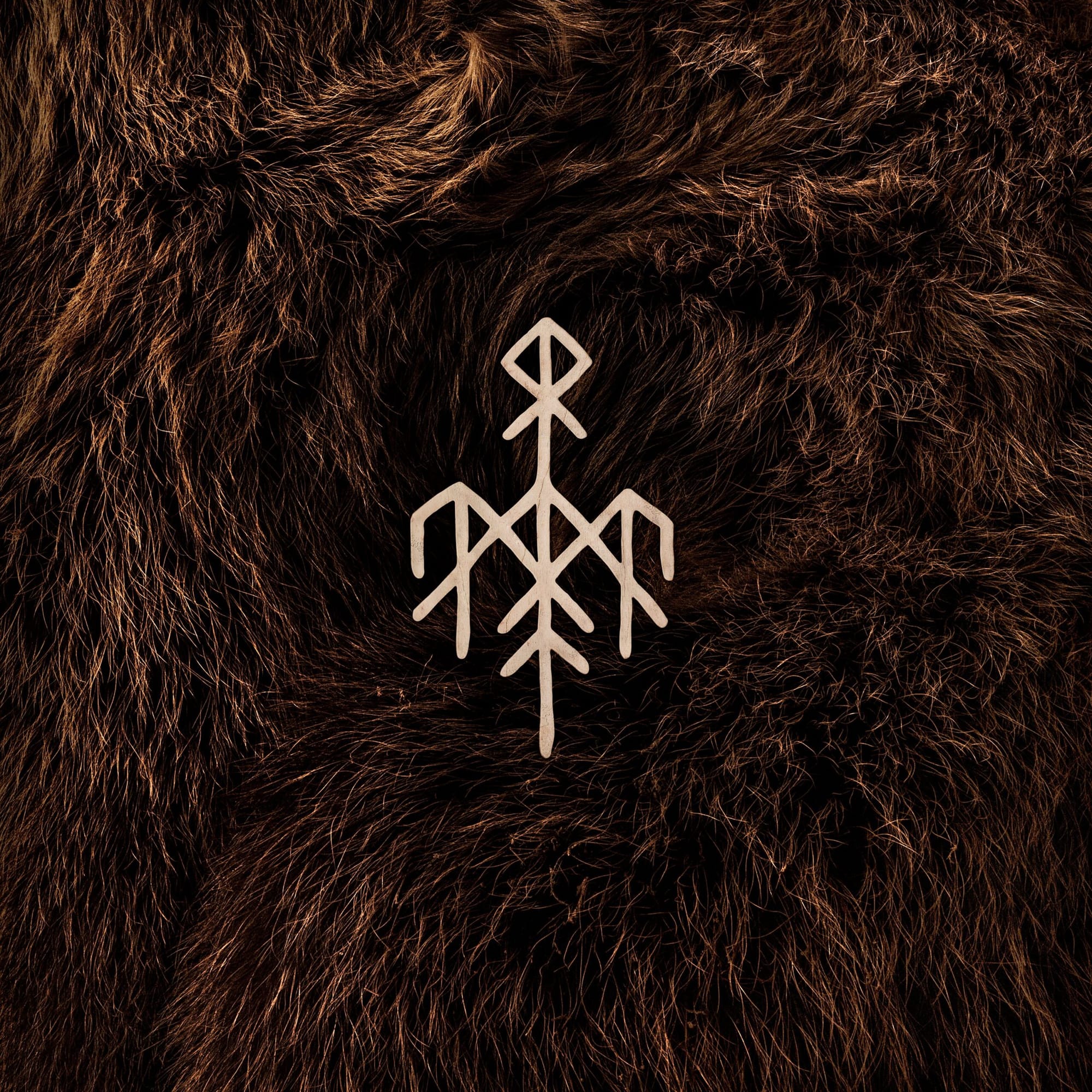Birna - Wardruna | Album Review

Overview
| Band | Wardruna |
|---|---|
| Origin | Norway |
| Genre | Nordic Folk, Ambient, Dark Folk |
| Release Date | January 24th, 2025 |
| Label | Columbia Local |
Personnel
- Einar "Kvitrafn" Selvik - vocals, all instruments, composer
- Lindy-Fay Hella - vocals, flute
- Arne Sandvoll - backing vocals, percussion
- HC Dalgaard - backing vocals, percussions, drums
- Eilif Gundersen - horns, flutes
- John Stenersen - moraharpa
Review
Version en Español
Hoy decidí hacer un review de algo un poco diferente a mis posts anteriores de música. Soy un gran fan de la música atmosférica y folk escandinava, y Wardruna es una de las mejores bandas contemporáneas del género. Formados en 2003, han lanzado seis álbumes de estudio llenos de música folk nórdica y ambient oscura, utilizando una diversidad de instrumentos nórdicos tradicionales, así como muchos poco convencionales. La banda fue formada por Einar Selvik, exmiembro de Gorgoroth, lo cual —si eres un conocedor del heavy metal— podría sorprenderte, ya que los estilos son casi opuestos. Wardruna significa "La Guardiana de los Secretos" o "Ella Que Susurra", lo que ya evoca una atmósfera oscura.
Selvik, el compositor principal de Wardruna, trabajó junto al compositor canadiense Trevor Morris para crear la música de la Temporada 2 de la serie de TV Vikings en 2014. Esta colaboración le dio a Wardruna una popularidad significativa. Sin embargo, en años recientes, han enfrentado desafíos, especialmente relacionados con cancelaciones de giras debido al COVID. Ahora, Wardruna está de vuelta con otro álbum de estudio llamado Birna (nórdico antiguo para "Osa"). Con este disco, continúan demostrando por qué son un referente en el género folk nórdico junto a otros nombres europeos como Faun y Danheim.
El álbum está lleno de instrumentación nórdica y conceptos etéreos de la naturaleza y el mundo antiguo, que se plasman claramente en la primera pista, "Hertan". Este tema comienza con un sonido de latido de corazón y percusión nórdica, seguido de voces profundas de fondo que, si eres gamer, podrían darte una vibra tipo Witcher. Esta canción es la introducción perfecta al estilo atmosférico y folk nórdico de Wardruna. La pista que da título al álbum, "Birna", viene después, introduciendo un instrumento de cuerda tipo violín y voces femeninas. Los tambores de marco principales son casi siempre predominantes en esta canción y en todo el álbum. Esta pista también muestra algunos de los instrumentos no tradicionales que mencioné antes, como piezas de metal u objetos de madera, que hacen que la música suene más natural o elemental.
La tercera canción del álbum es "Ljos til Jord", otra pista que presenta el patrón de percusión ya familiar pero introduce flautas y una sensación más oscura. Luego pasamos a "Dvaledraumar", mi favorita y la canción más larga del álbum. Comienza únicamente con el sonido pesado y profundo de un cuerno y sonidos oscuros y etéreos que te transportan durante los primeros cinco minutos aproximadamente. Es una pieza totalmente atmosférica que se construye paso a paso, añadiendo voces masculinas e instrumentos medievales como la lira (tocada con bastante reverb). La canción es simultáneamente relajante y oscura.
La pista número cinco es "Jord til Ljos" (opuesta en nombre a la tercera canción). En cierto modo, se basa en la pista anterior pero trae de vuelta el patrón de percusión continuo y el coro masculino, que comienza a sentirse repetitivo en este punto. "Himinndotter" es la siguiente pista destacada, que sirvió como el primer single del álbum. Comienza con una voz femenina, a la que luego se une un coro masculino, cantando una melodía muy pegadiza sobre un patrón de percusión diferente, añadiendo un toque de innovación a lo que hemos escuchado hasta ahora. "Hibjørnen" es una pieza vocal y de cuerdas sin percusión que sirve como puente hacia "Skuggehesten" y "Tretale". Estas pistas regresan al repetitivo patrón de percusión pero incorporan más sonidos de la naturaleza y una sensación medieval clásica. El álbum termina con "Lyfjaberg", otra canción similar en estructura a otras del disco, que presenta una introducción más épica con el sonido de pasos crujiendo sobre nieve y hojas secas.
He disfrutado mucho este álbum desde su fecha de lanzamiento en enero. Tiene todo lo que me gusta de mezclar sonidos atmosféricos con un estilo medieval/nórdico, lo cual me ayuda a concentrarme cuando hago tareas que requieren enfoque. Tras un análisis más crítico, aprecio la cantidad de instrumentación y diversidad de sonidos. Sin embargo, le falta algo de creatividad de una canción a otra, apoyándose mucho en los mismos patrones de percusión y estilos vocales durante la mayor parte del disco. No obstante, estoy seguro de que escucharemos más de Wardruna en el futuro, y continúan siendo una de las bandas líderes de folk contemporáneo en Europa.
Today, I decided to review something a little different from my previous music posts. I'm a huge fan of atmospheric and Scandinavian folk music, and Wardruna is one of the best contemporary bands in the genre. Formed in 2003, they have released six studio albums filled with obscure ambient and Nordic folk music, making use of a diversity of traditional Nordic instruments as well as many non-traditional ones. The band was formed by Einar Selvik, a former member of Gorgoroth, which—if you are a heavy metal connoisseur—might surprise you, as the styles are almost opposites. Wardruna means "The Guardian of Secrets" or "She Who Whispers," which already evokes an obscure atmosphere.
Selvik, the main composer of Wardruna, worked alongside Canadian composer Trevor Morris to score Season 2 of the TV series Vikings in 2014. This collaboration brought Wardruna significant popularity. However, in recent years, they have faced challenges, especially related to tour cancellations due to COVID. Now, Wardruna is back with another studio album called Birna (Old Norse for "Bear"). With this record, they continue to demonstrate why they are a staple in the Nordic folk genre alongside other European names like Faun and Danheim.
The album is full of Nordic instrumentation and ethereal concepts of nature and the old world, which are clearly pictured in the first track, "Hertan." This track starts with a heartbeat sound and Nordic percussion, followed by deep voices in the background which, if you're a gamer, might give you Witcher vibes. This song is the perfect introduction to Wardruna's atmospheric and Nordic folk style. The title track, "Birna," comes next, introducing a violin-like string instrument and female voices. The main frame drums are almost always predominant in this song and throughout the entire album. This track also showcases some of the non-traditional instruments I mentioned earlier, like metal pieces or wooden objects, which make the music sound more natural or elemental.
The third song of the album is "Ljos til Jord," another track featuring the now-familiar drum pattern but introducing flutes and a darker feeling. Then we move to "Dvaledraumar," my favourite and the longest song on the album. It starts solely with the heavy, deep sound of a horn and dark, ethereal sounds that carry you through the first five minutes or so. It's an entirely atmospheric piece that builds step-by-step, adding male voices and medieval instruments like the lyre (played with significant reverb). The song is simultaneously relaxing and dark.
Track number five is "Jord til Ljos" (opposite in name to the third song). It somewhat builds on the previous track but brings back the continuous drum pattern and male chorus, which starts to feel repetitive at this point. "Himinndotter" is the next standout track, which served as the album's first single. It starts with a female, later joined by a male chorus, singing a very catchy melody over a different drum pattern, adding a touch of innovation to what we've heard so far. "Hibjørnen" is a drumless vocal and string piece that serves as a bridge leading to "Skuggehesten" and "Tretale." These tracks return to the repetitive drum pattern but incorporate more nature sounds and a classic medieval feeling. The album ends with "Lyfjaberg," another song similar in structure to others on the record, featuring a more epic introduction with the sound of footsteps crunching on snow and breaking leaves.
I've really enjoyed this album since its release date in January. It has everything I like about mixing atmospheric sounds with a medieval/Nordic style, which helps me concentrate when doing tasks that require focus. Upon more critical analysis, I appreciate the amount of instrumentation and diversity of sounds. However, it lacks some creativity from one song to another, relying heavily on the same drum patterns and vocal styles for the majority of the record. Nevertheless, I'm sure we will hear more from Wardruna in the future, and they continue to be one of the leading contemporary folk bands in Europe.
Final Scoring
Track List (Spotify Version)
- Hertan [6:12]
- Birna [6:25]
- Ljos til Jord [5:00]
- Dvaledraumar [15:25]
- Jord til Ljos [5:41]
- Himinndotter [5:37]
- Hibjørnen [3:02]
- Skuggehesten [3:44]
- Tretale [6:57]
- Lyfjaberg [8:28]
